There are several reasons that you may want to build muscle on your dog. Canine athletes often benefit from increased muscle mass, as it helps them go harder and longer. Older dogs often lose substantial amounts of muscle mass, and they often need extra help to maintain their body weight. Overweight dogs may also benefit from muscle gain, as it will increase their metabolism.
No matter the reason, building muscle mass has much to do with what your dog eats. While your dog needs to stay active to ensure that they gain muscle and not fat, they won’t gain anything unless they’re eating the correct stuff.
Fortunately, helping your dog gain muscle through eating isn’t that difficult. It simply takes a bit of background knowledge and a few specific steps.

The 6 Tips to Build Muscle on Dogs
Before changing up your dog’s diet, speak to a vet to ensure that it’s the right thing to do. If your dog has lost muscle mass, is less energetic, or is in poor body condition, there may be other, potentially serious, issues at work.
It’s also important to make sure you don’t exceed a dog’s recommended daily protein intake. Although AAFCO standards recommend a minimum of 18% dry matter protein for adult dogs and 22.5% for puppies, they have not set a specific maximum value. However, a dry matter content of around 20-28% is considered suitable for most dogs, depending on their lifestyle, health, and activity levels. Anything above 35% protein would be considered excessive in most cases.
If you need to speak with a vet but can't get to one, head over to PangoVet. It's our online service where you can talk to a vet online and get the personalized advice you need for your pet — all at an affordable price!

If your vet agrees that your dog could do with increasing their muscle mass, here are six ways to go about it.
1. Choose a Muscle-Gaining Dog Food
First, your best bet for helping your dog gain muscle is to choose a dog food that is specifically designed to do so. You can also find muscle-gaining treats, but these will make up a small amount of your dog’s diet (and therefore not have as big of an impact as their food).
We recommend choosing a quality, weight-gaining food, as they are not all made the same. A food should preferably have a lot of meat-based protein. Without enough protein, your dog simply won’t gain muscle. Some of the best options are fresh-frozen dog foods created from human-grade ingredients, such as Ollie Fresh Food, Farner’s Dog, or Nom Nom.
Furthermore, to help digest this protein, fiber is recommended. Your dog may benefit from more or less fiber, depending on their activity level and needs. You may need to play around with moderate- and high-fiber foods until you find one that works best for your canine. If your dog experiences digestive upset when consuming their dog food, it could be a sign that they need more fiber.
Finally, your dog also needs micronutrients, which are all the proper vitamins and minerals to stay healthy. A sickly dog is not going to gain muscle.
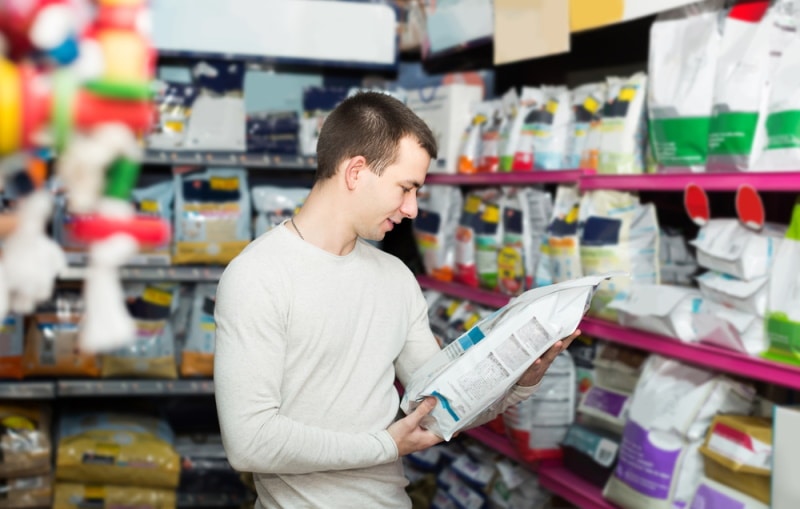
2. Amp Up the Flavor
If you want your dog to gain muscle, they need to eat. Therefore, the food you offer must be flavorful. While many dog food companies do a good job of this on their own, adding some meat-based toppers may be a good option.
This is where you can choose something that contains high protein levels, such as Wellness CORE Bowl Boosters, provided you are only using a very small amount.
3. Don’t Forget Hydration
Your dog needs plenty of hydration to build muscle. Hydration is vital for transporting nutrients throughout your dog’s body. Plus, less-than-optimal hydration can lead to problems with your canine’s exercise routine, which is also vital for muscle building.
Of course, toppers can add extra hydration to your dog’s diet, but dogs are pretty good about drinking enough water. Be sure that your dog’s water is clean and available at all times. If you take your dog on a walk, consider taking water with you if it’s more than a mile or so. Generally, if you take water with you, your dog should also be provided water.
Often, dogs that eat a wet-food based diet don’t drink as much water as they get plenty of moisture from their food. If you want to encourage your dog to drink a little more, especially on a warm day or after exercise, consider a drinking fountain to attract their interest.
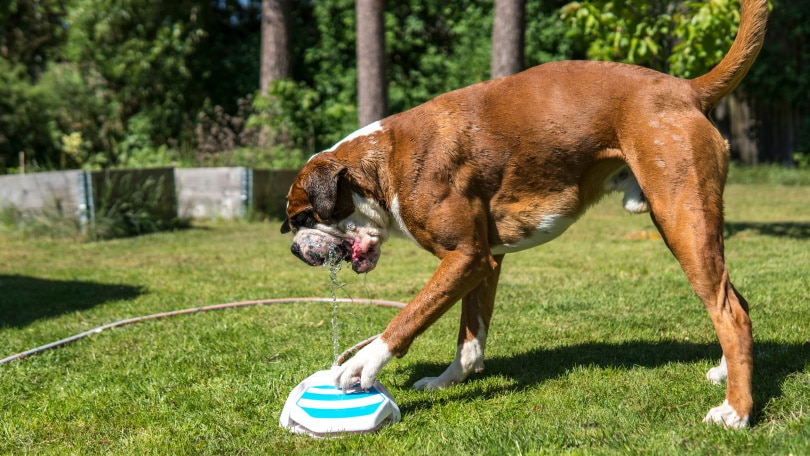
4. Consider Adding Extra Food
Often, when we are working out how much to feed our dogs, we use the feeding guide provided on the pack, and this is a good starting point. However, a feeding guide is exactly that – a guide. In many cases, sticking to the amount on the pack leads to some very overweight dogs, while in other cases, it may not be enough to meet their needs. It all depends on genetics, lifestyle, and activity levels.
If your dog is on a high-quality food, with appropriate protein, fat, and fiber levels, and is in good health, they may simply need a larger portion. If your dog isn’t particularly food motivated, you might consider offering them smaller portions more often to increase their overall food intake without overwhelming them in one or two meals.
To help you work out how much food your dog needs, use the calorie calculator below, and monitor their body condition score to ensure they’re on the right track.
The exact amount of calories an individual animal needs to maintain a healthy weight is variable and influenced by many factors including genetics, age, breed, and activity level. This tool is meant to be used only as a guideline for healthy individuals and does not substitute veterinary advice
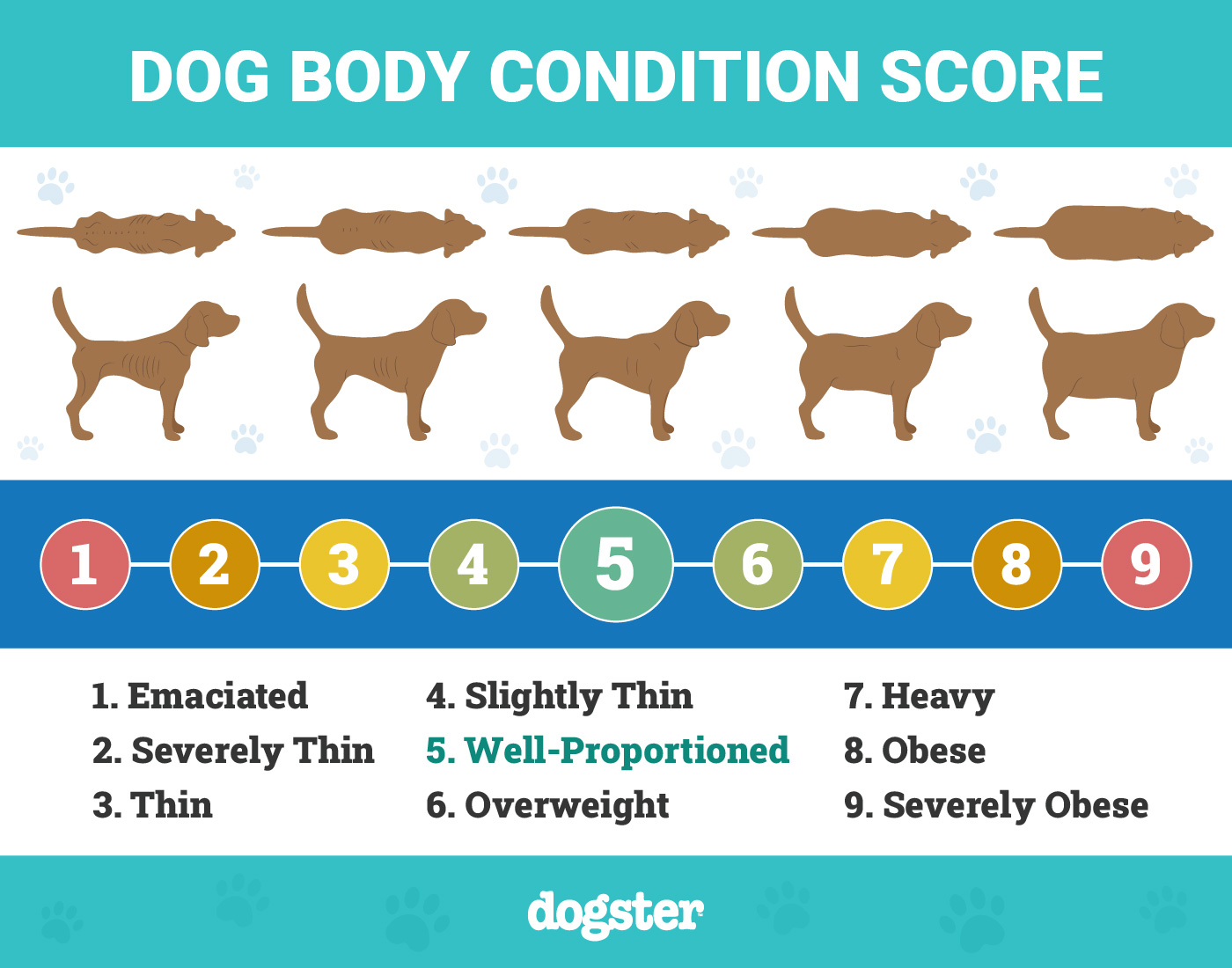
5. Add Supplements
There are several supplement options on the market for dogs that need to gain muscle. Be sure to use an option specifically designed for canines, as not all human supplements are safe for dogs to take. These supplements can contain a variety of different ingredients, so be sure to take a look at the ingredient list before purchasing it. Of course, speak to a vet if you have any questions or concerns.
Many supplements aimed at joint and skin health contain essential fatty acids that can help with maintaining body condition, or digestive support supplements containing probiotics can also improve the digestibility of food and allow your dog to get the most out of their diet.
You may also find some supplements specifically designed for working dogs to help them build and maintain muscle mass, and look for ingredients like animal protein, oils, probiotics, and omega-3 and 6. Always check with a vet before starting your dog on a high-energy supplement, as the wrong ingredients could cause problems.
6. Do Some Home Cooking
You might think that a homemade diet might be the ideal way to up your dog’s protein intake and muscle mass, but this can actually have the opposite effect. Getting the balance of macro and micro nutrients right isn’t easy, and overall, you’re far safer choosing a commercially prepared, AAFCO-approved diet. However, you can break up the routine with some home cooking 2-3 times a week.
Many people would say raw food is the best way to fuel your dog’s muscles, but it’s important to know that feeding your dog uncooked meat carries the inherent risk of transmitting pathogens like Salmonella and E. coli to your pets and to you. In fact, the FDA advises against raw feeding. Gently cooking meat at a temperature of 165°F will eradicate virtually all potential toxins and pathogens from meat, without significantly affecting its nutritional value.
Here is a simple, protein-packed recipe you can use to help your dog get the most out of their weekly menu:
Mighty Muscle Mix
- 200g (7oz) chicken breasts, diced
- 1 cup of organ meats (liver, chicken hearts, etc), diced
- 2 eggs
- 1 cup diced pumpkin
- 1 tbsp oil (coconut, vegetable, sunflower)
- ⅓ can black beans (no added salt or flavors), drained and rinsed
- Gently heat the oil in a large pan.
- Cook the meat until just starting to brown.
- Add the pumpkin and beans, and mix over low heat for 5 minutes.
- Stir in the eggs and continue to cook for another 2-3 minutes. You can also crush the egg shells and add them for a calcium boost.
Approximate total calorie content: 1000kcal
Allow the food to cool, divide into portions based on your dog’s calorie requirements, then transfer to the refrigerator. Portions can be refrigerated for up to 48 hours, so freeze any that will not be used in the next two days.
You can double or divide the measures to suit your dog’s size and calorie needs.
We recommend offering half a portion mixed with a half portion of your dog’s regular food initially to ensure it doesn’t cause gastrointestinal upset.

In Conclusion
Most pet owners report that their dogs gain weight pretty quickly when given the appropriate diet. Usually, you’ll see minor results in only a month or two. However, for serious muscle gain, you’ll likely have to continue the diet for many months.
If you’ve tried all of these steps and your dog still isn’t gaining muscle mass after a month, speak to a vet. Practically all dogs should gain weight after trying these steps. If your dog isn’t, it could be a sign of an underlying illness. Parasites and absorption problems can get in the way of weight gain, and these problems require veterinary diagnosis and treatment.
Featured Image Credit: Nadezhda Zaitceva, Shutterstock
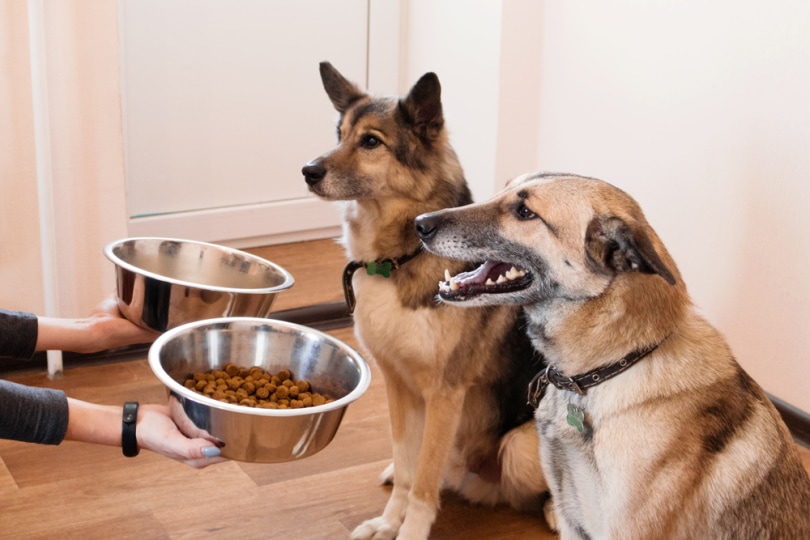


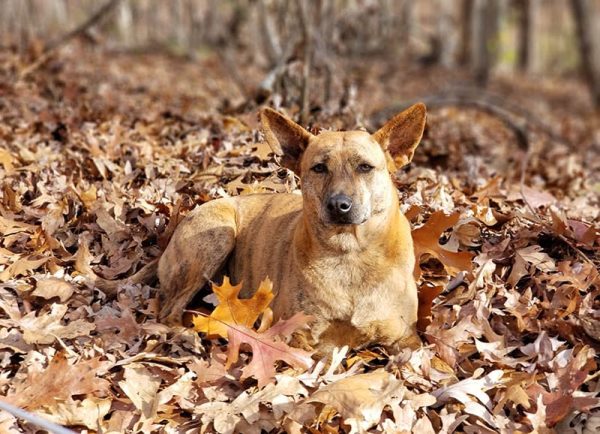





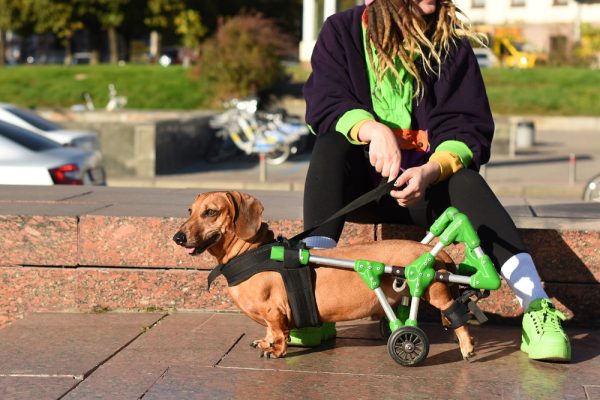


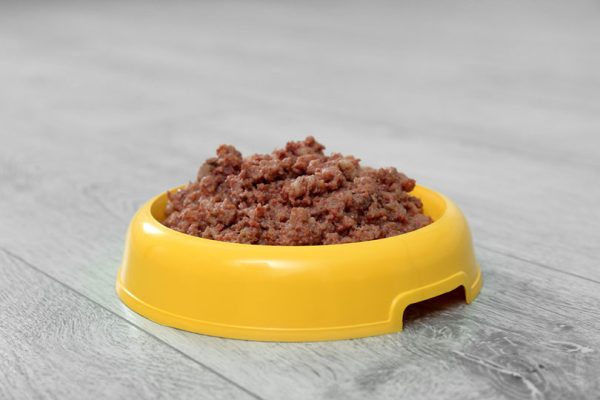


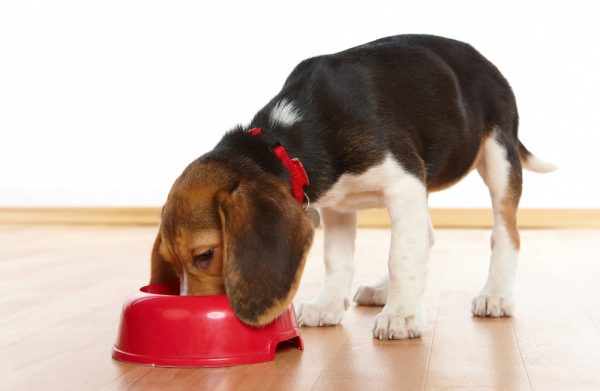

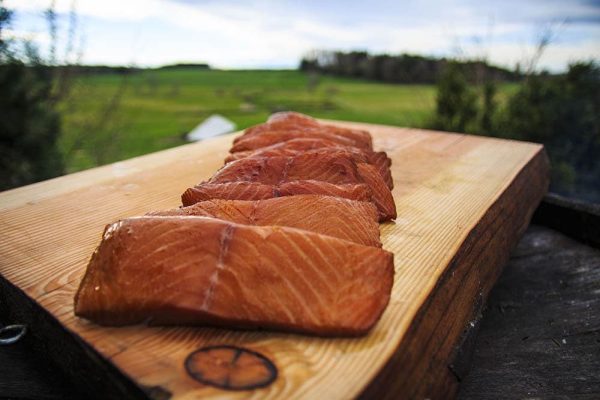

2 Responses
Our 8 year old German Shepherd, Malinois has torn both acl’s in her back legs. She has had the first one repaired about three weeks ago. I have lots of PT I am doing with her. I’m trying to get her as much muscle as possible before May when she will have the other one repaired. I will tell out Vet before giving her any supplements, mainly due to other medications she is taking. Since she was a puppy I have walked her any where from a half a mile up to four miles a day so she has always been a very fit dog
Thanks for any help
Allen Bryce
Hi Allen, thanks for getting in touch. Your poor pup! Those torn ACLs must have been so painful. It sounds like you're doing an amazing job staying on top of her recovery with physical therapy and keeping her strong as she prepares for her second surgery in May. It’s great that she’s always been so active, though—keeping up those muscle gains is definitely going to help with her recovery.
Since she’s used to walking, even shorter walks can help maintain muscle tone, just be mindful of not overdoing it. You probably already know this, but gentle range-of-motion exercises are great for keeping those joints as mobile as possible without causing strain. If you have any other concerns or want to chat with one of our online vets, you can visit PangoVet.com. Our team of vets will be able to address any questions you have and guide you on the best plan of action for your pet. You can book a time that is convenient for you at this link here: https://pangovet.com/schedule-appointment/. We look forward to speaking with and helping you and your dog. 🙂